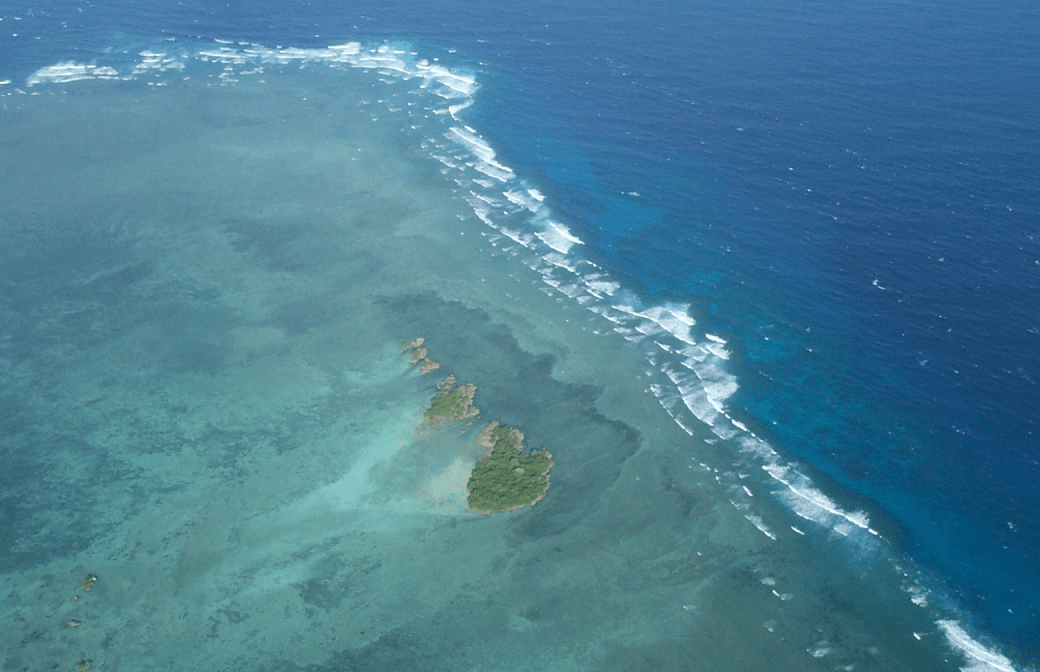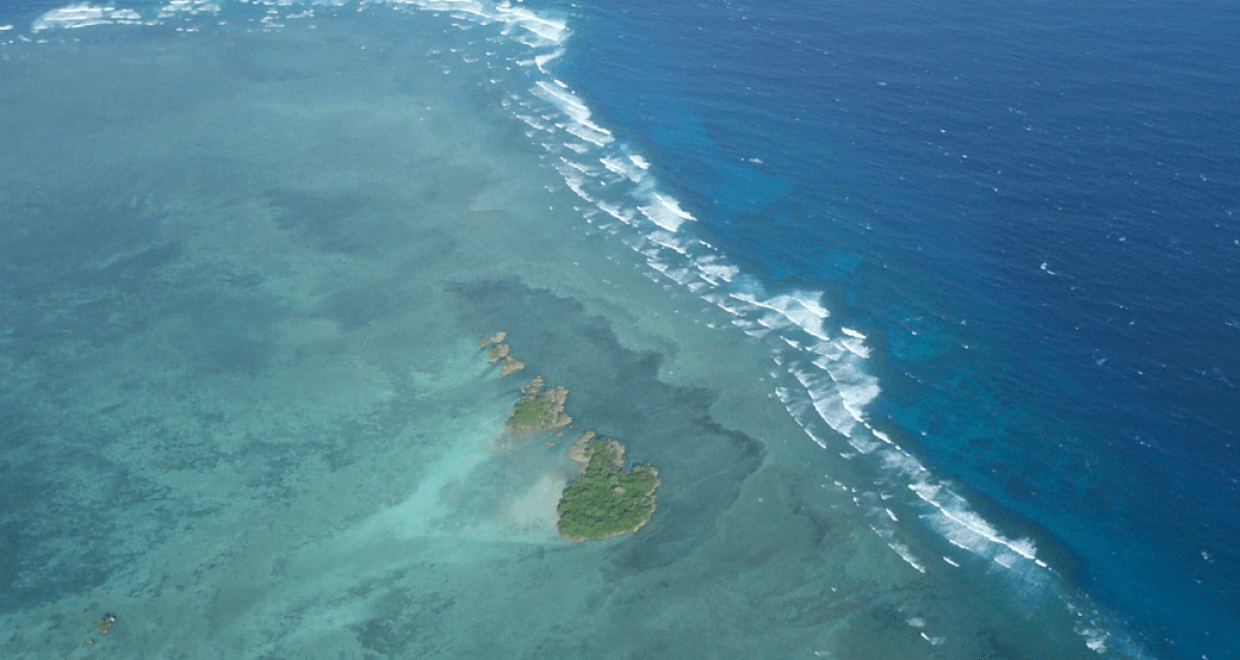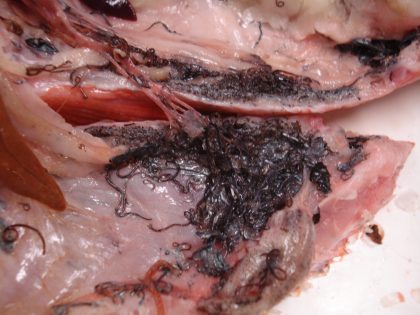World Ocean Day
We celebrate World Ocean Day to remind us of how important the marine habitat is today and its need for better environmental stewardship tomorrow. Even though the lives of innumerable species of parasite hardly get a mention within Goal 14: Life below water of the UN Sustainable Development Goals, parasitism is inherent within all marine and brackish ecosystems. In jest, simply scratch the surface of many a professional parasitologist and find the marine parasitologist buried within, as several authors within the 2002 Special Issue of Parasitology demonstrate. More seriously, the oceans remain our last unexplored frontier, future astrobiology aside, with the study of evolution continuously reminding us that all life ultimately began under the waves.
For those who live away from marine coastlines, oceanic life can become more abstract, experienced in part during adventure holidays or, more often than not, when viewed from on high as we travel continent to continent by air. Indeed, delving into an ocean’s depths is only for the lucky few but with landmark programmes like the BBC’s Blue Planet series, millions of us have explored the undersea world from the safety of our own armchairs. There we can see the importance of the small, as we glimpse tiny plankton adrift on currents and basal to the marine food chain, to the vulnerability of the large, with many leviathans of the deep pressed to species extinction by our own rapacious hands.
In terms of parasitology, we can only speculate on the long list of parasite species lost to science within the growing inventory of many an ill-fated host species. Steller’s sea cow, for example, passed into extinction in the 1880s, remaining today merely as antique curios, illustrations within books or as barbed memories in our growing global regret. The parasitic diversity hosted by such extinct species is also lost to time and space, passing into history without ever being described or understood. Though some crumbs of biodiversity comfort can be found upon the almost daily descriptions of new marine parasites, the decline in host species diversity does not bode well for ocean health in general. Nevertheless, studies of extant parasite populations have added real value in recognising further environmental threats to our oceans, from assessing plastic pollution to measuring global warming. Several parasite species act as sensitive bioindicators of marine ecosystem damage or, conversely, its inherent resilience.
To celebrate the roles that parasites play in the study of the oceans, we have assembled a combined list of papers taken from Parasitology and Journal of Helminthology. Collectively, these illustrate how marine animals big and small have other tiny animals tucked away inside them, living out their own lives but in rather more nefarious ways.
In Parasitology
Just under 20 years ago the 2002 Special Issue of Parasitology highlighted the importance of marine parasitology in greater detail. At that time, as molecular marker technologies for fish stocks were nascent, Mackenzie, ‘Parasites as biological tags in population studies of marine organisms: an update’, reviewed how certain parasite species could act as population trackers of particular fisheries, discussing application(s) in vertebrate and invertebrate harvested stocks. Since then, the Pacific squid fishery has continued to grow, set to further increase as a source of low-cost protein for human consumption as alternative fish stocks are becoming more meagre.
When certain parasite species are consumed in non-processed fish, they can become of human health concern, further to those diseases they induce in other mammals. McCelland, ‘The trouble with sealworms (Pseudoterranova decipiens species complex, Nematoda): a review’, pointed out the taxonomic problems of identification of worms within the species complex of the nematode Pseudoterranova decipiens, assessing its impact in the seafood industry. Further to fisheries, parasites themselves are integral within diverse food webs. Their general importance was reviewed by Marcogliese, ‘Food webs and the transmission of parasites to marine fish’.
Upon later application of molecular markers, specifically with inspection of DNA sequence data, better identification of fishery stocks, with estimated effective population sizes, is now possible. In parallel, application of these methods in parasites has fostered ever finer appreciation of the evolution, biodiversity and multi-host transmission cycles. Moving forward to today, Bommarito et al. ‘Effects of first intermediate host density, host size and salinity on trematode infections in mussels of the south-western Baltic Sea’, assessed how salinity gradients and putative freshening of the Baltic Sea will impact upon the trematode assemblages of marine molluscs. Predicted and actual changes in this coastal parasitology will ultimately determine how these flatworms later leave their marks on parasitised shoreline birds. Indeed, a neglected facet of ocean health should not overlook that of the seabirds which, in years past, were consumed in their millions as another commercial source of food.
The division between what is ‘terrestrial’ and ‘marine’ may sometimes blur. A good example is provided by Simon et al. ‘Spatio-temporal variations and age effect on Toxoplasma gondii seroprevalence in seals from the Canadian Arctic’, who demonstrate how marine mammal health and Inuit populations were ultimately connected by the rather ubiquitous protist parasites, Toxoplasma gondii. No doubt many marine mammal species are becoming ever more infected as it continues to do well on land and ultimately contaminates into the marine environment, as driven by anthropogenic factors.
Even with more widely available molecular assays, the use of parasites to delineate fish stocks continues. Baker et al. ‘Stock identification of the sciaenid fish Micropogonias undulatus in the western North Atlantic Ocean using parasites as biological tags‘, conducted an exhaustive investigation of the Atlantic croaker (Micropogonias undulatus). In total, 30 species of parasite from four phyla were found, with several new host records reported, alongside the description of a new monogenean.
As our understanding of the biology of Pseudoterranova increased with molecular assays, their wider application has also improved our appreciation of the pathology that the nematode Anisakis causes in toothed whales. Pons-Bordas et al. ‘Recent increase of ulcerative lesions caused by Anisakis spp. in cetaceans from the north-east Atlantic’ highlight increasing parasite prevalence alongside enhanced host pathology. The latter was raised perhaps by other environmental stressors.
Whilst trematodes can be considered the masters of multi-host transmission, the lifecycle of lepocreadiid trematodes has an additional feature where metacercariae can be found in jellyfish. Again through application of molecular DNA methods, Browne et al. ‘DNA sequencing demonstrates the importance of jellyfish in life cycles of lepocreadiid trematodes’, link up the lifecycles of these flatworms in fish which have likely fed on these infested jellyfish, highlighting a poorly known pathway of transmission.
Understanding of the mechanisms that determine host and parasite relationships is a central pillar of fish biology. Beer et al. ‘Role of ecology and phylogeny in determining tapeworm assemblages in skates (Rajiformes)‘, turned their attention on the relationship between skates and tapeworms. Comparing across several taxa, they found that co-speciation as well as other co-evolutionary scenarios are shaping these associations. Moreover, certain ecological parameters were evolutionary drivers: host diet, distribution depth, average body size and geographical location were noted.
Like in seabirds, the distinctions between the terrestrial and marine environments also blur for the sealions who spend a considerable time on land. Gonzales et al. ‘Morphometrical and molecular evidence suggests cryptic diversity among hookworms (Nematoda: Uncinaria) that parasitize pinnipeds from the south-eastern Pacific coasts‘ explored the known host range of nematode hookworms infecting South American sea lions and fur seals. Through molecular and morphological analyses, they found pertinent populational differentiation with an undescribed putative species within the Uncinaria.
Outlook
This small foray into the world of marine parasites whets the appetite for more and adds a new dimension in ocean health. We have sought to illustrate the importance of parasites and highlight how diversity in its broadest sense is the backbone of all healthy ecosystems. Looking towards 2030, we wish that our oceans will continue to remain, and hopefully improve, as an enjoyable sustainable natural resource for many generations to come.

View the full collection of articles from both Parasitology and Journal of Helminthology here until the end of July 2021.

Photo Credit: Russell Stothard








